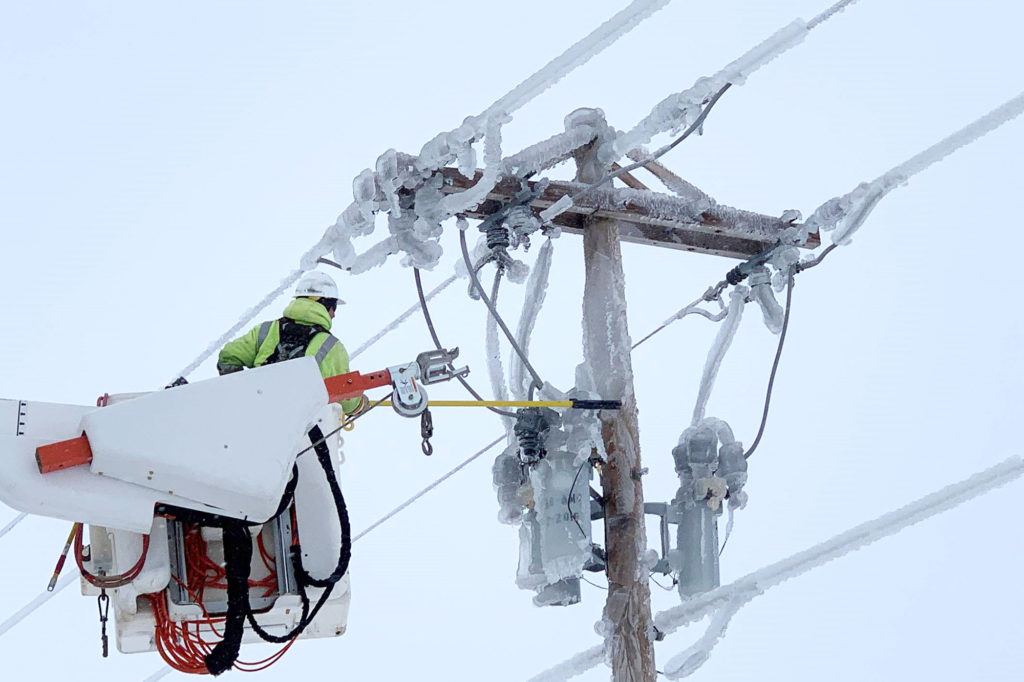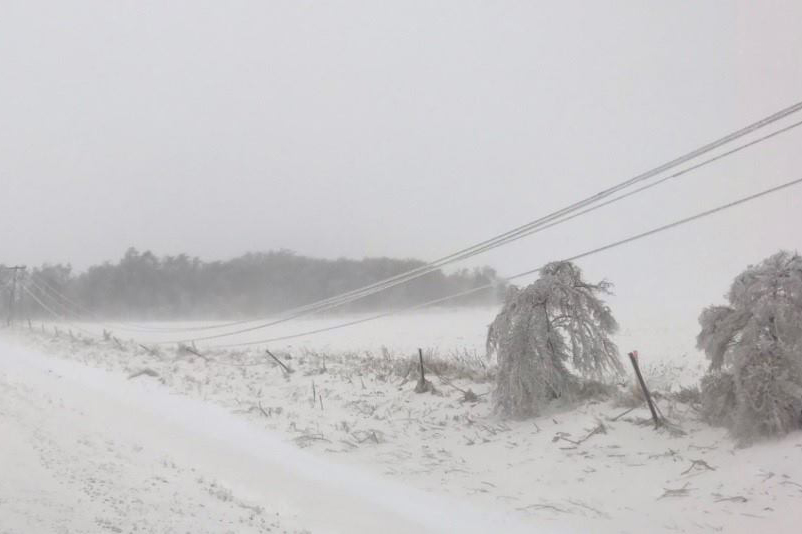
Electric cooperative crews in the upper Midwest are busy this weekend replacing poles and repairing lines to restore power to thousands of co-op members who lost service because of high winds and heavy snow and ice from an April storm.
“We have over 375 poles on the ground, and that number will likely rise once we patrol all areas of our system,” said Carrie Vugteveen, director of communications and government relations for Sioux Valley Energy.
The Colman, South Dakota-based distribution co-op, with the help of 40 additional contract and mutual aid line crews, began pushing through service restoration jobs before dawn on Friday. “The Sioux Valley Energy system covers a total of approximately 6,000 square miles, and we have damage in almost half of it—2,500 square miles,” said Vugteveen.
As the storm spread across the region, distribution co-ops in South Dakota, Minnesota and Iowa watched their outage numbers rise as portions of their system crashed into fields and along roadsides, weighted down by heavy ice.
South Dakota’s electric co-ops reported high outage numbers surpassing 16,000 members with more than 7,500 meters out of service early Friday. Several co-ops urged members to report downed power lines and warned that restoration work could be stalled by drifting snow and frozen slush that’s making some areas difficult to reach.
“Federated has about 300 poles down, mainly on the north-south roads,” said Andrea Christoffer, marketing and communications manager for Jackson, Minnesota-based Federated Rural Electric Association.
Deliveries of new poles and other line hardware began arriving late April 11, and crews will continue rebuilding lines until all power can be safely restored.

More than 2,700 of the co-op’s members were without power following the initial ice storm, but co-op officials have said more problems could lie ahead as high winds continue to stress ice-laden power lines.
“For the line crews it feels like one step forward and two steps back,” said Federated operations manager Joe Marthaler. “They get an area on and then another one goes off. It will likely take days to get all power restored.”
“The storm delivered substantial ice accumulations and high winds along Iowa’s northern border and throughout Minnesota,” said Erin Campbell, director of communications for the Iowa Association of Electric Cooperatives.
She said about 4,400 co-op served meters were without power as a result of the storm as of Thursday, with several distribution co-ops in the northern part of the state reporting outages on their systems. About 70 line technicians and other operations personnel from the state were assisting co-ops in northern Iowa and Minnesota with restoration work.
The storm also took a toll on transmission assets, with Madison, South Dakota-based East River Electric Power Cooperative and Maple Grove, Minnesota-based Great River Energy both reporting significant damage to transmission structures.
Crews from East River Electric were able to restore service to 24 of its substations Thursday, but work to re-energize three others continued Friday.
There are downed powerlines on parts of the transmission system and crews are currently working to repair those structures, officials said.
Le Mars, Iowa-based G&T Northwest Iowa Power Cooperative also reported transmission structure damage.
Derrill Holly is a staff writer at NRECA.